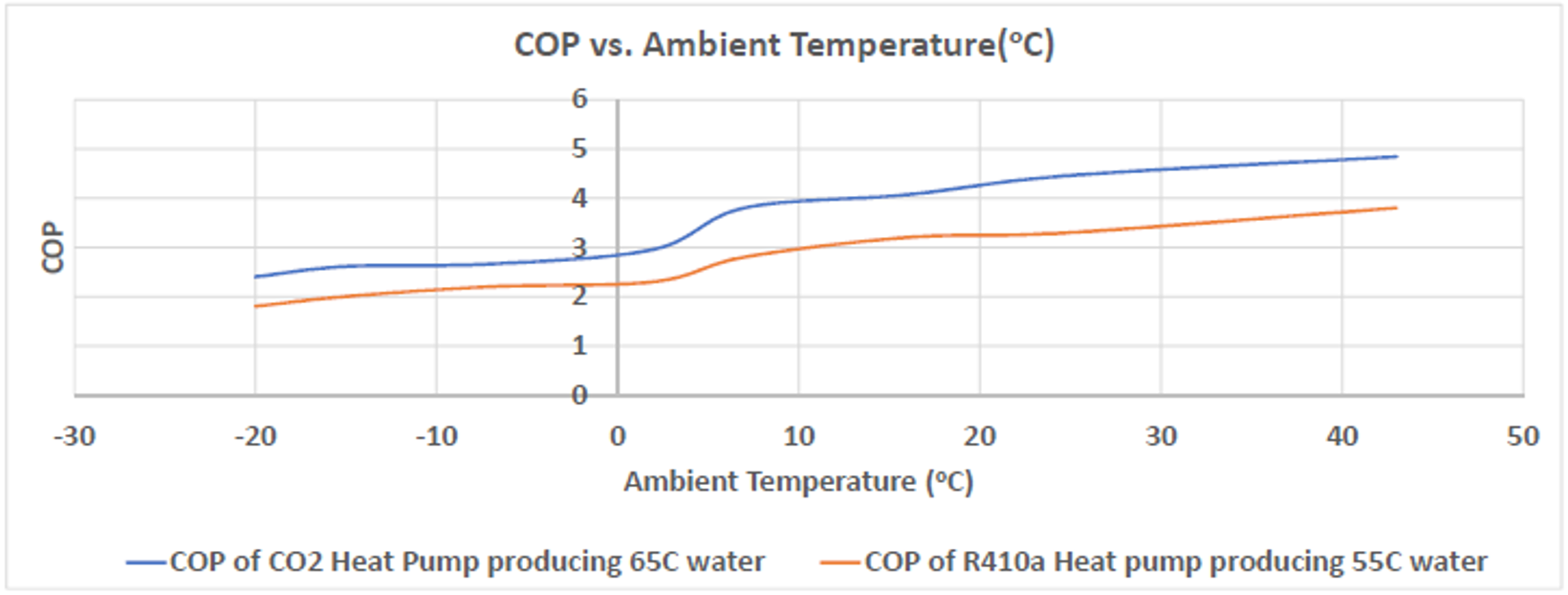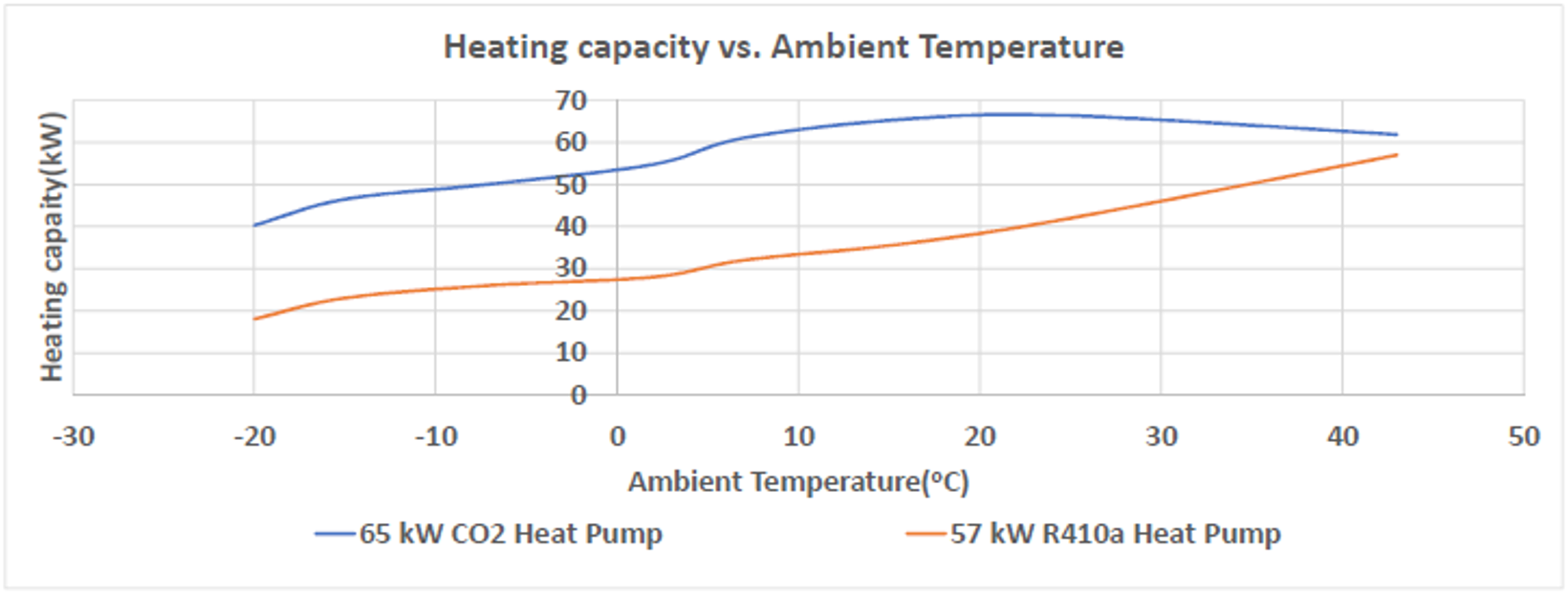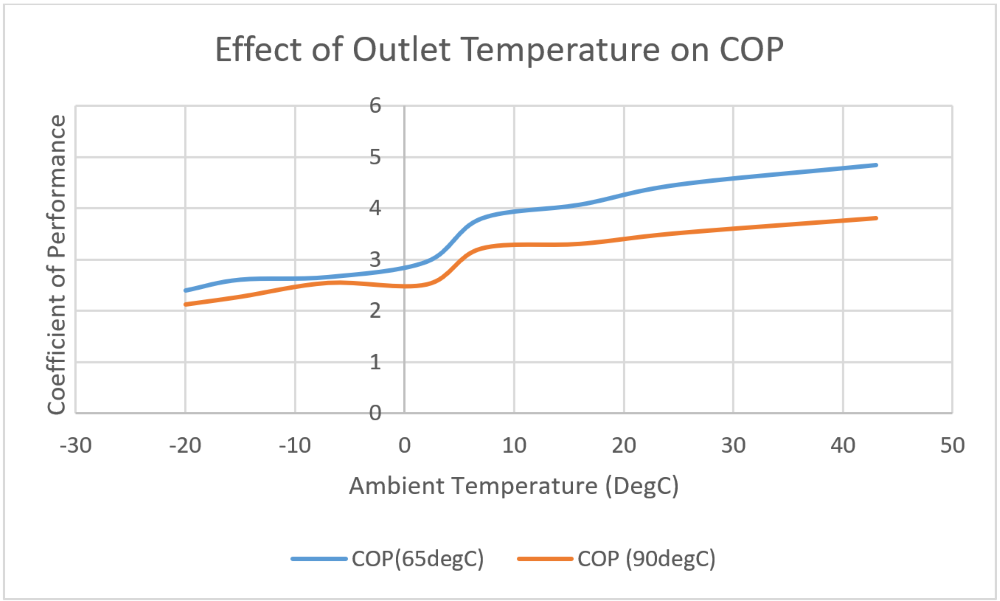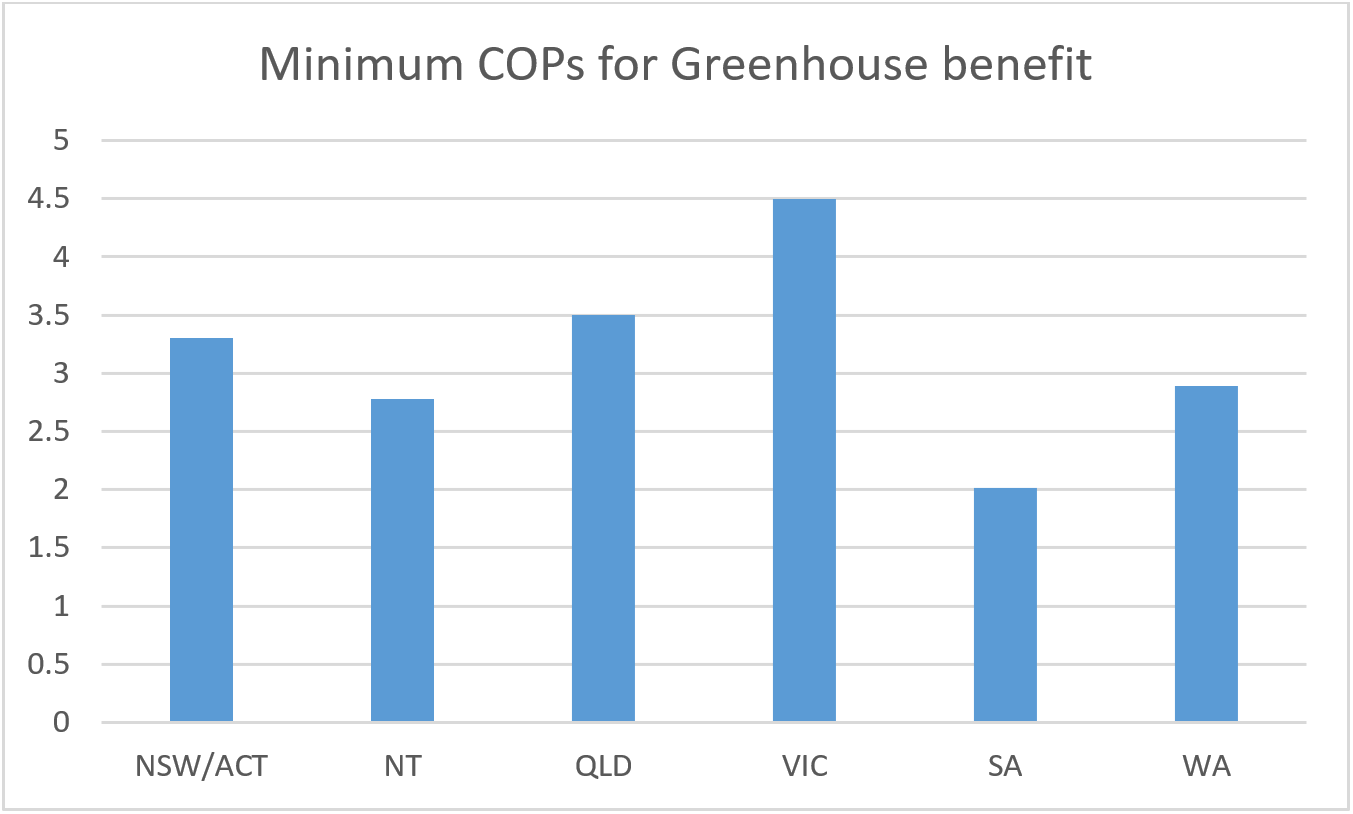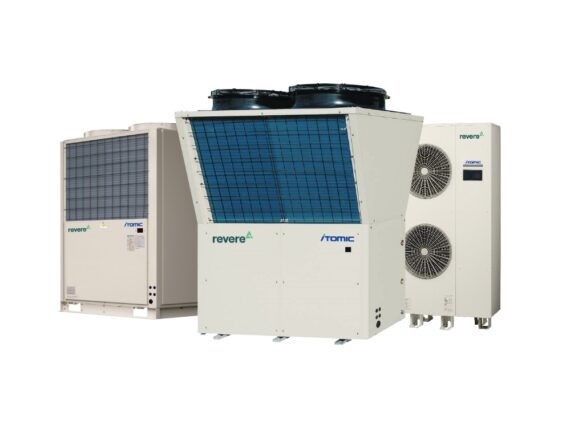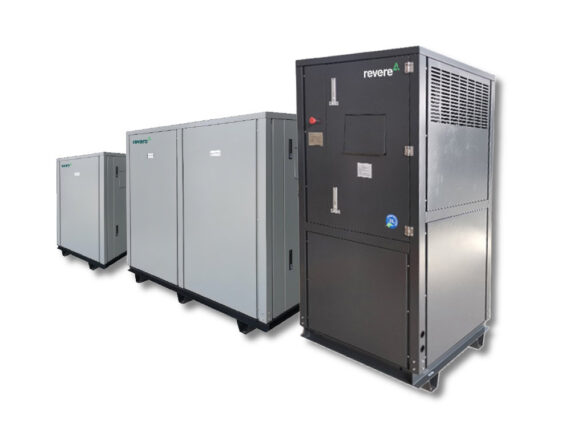CO2 heat pumps are rapidly becoming available in a wide variety of configurations and from a wide range of suppliers. In this final article, we use the Revere™ CO2 heat pumps available from Automatic Heating to demonstrate the key performance features of CO2 heat pumps.
CO2 Heat Pump Efficiency
The COP of CO2 heat pumps is higher than for HFC heat pumps in applications where a high temperature difference is required between the inlet and outlet of the water being heated. This is illustrated in Figure 4.
Figure 4. Efficiency of CO2 heat pump as a function of ambient temperature (domestic hot water application).
The figure demonstrates a number of generic features of CO2 heat pumps:
- The efficiency is routinely higher than equivalent HFC heat pumps in domestic hot water application.
- The increase in COP is roughly fixed across non-freezing ambient temperatures. This means that the relative efficiency benefit increases as the ambient temperature drops towards zero.
- The maximum hot water temperature achieved by the CO2 system is higher than that for the HFC system.
This article series is kindly contributed by Dr Paul Bannister, a thought leader and public speaker on energy and energy efficiency issues in Australia. For other articles by Dr Paul Bannister, please refer to our news section.

